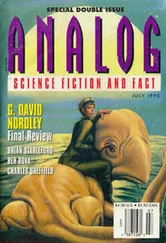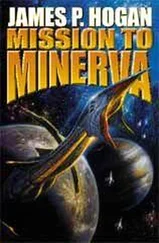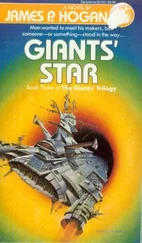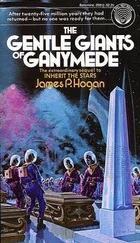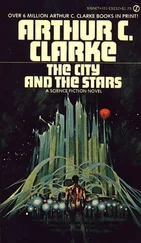James Hogan - Inherit the Stars
Здесь есть возможность читать онлайн «James Hogan - Inherit the Stars» весь текст электронной книги совершенно бесплатно (целиком полную версию без сокращений). В некоторых случаях можно слушать аудио, скачать через торрент в формате fb2 и присутствует краткое содержание. Жанр: Фантастика и фэнтези, на английском языке. Описание произведения, (предисловие) а так же отзывы посетителей доступны на портале библиотеки ЛибКат.
- Название:Inherit the Stars
- Автор:
- Жанр:
- Год:неизвестен
- ISBN:нет данных
- Рейтинг книги:3 / 5. Голосов: 1
-
Избранное:Добавить в избранное
- Отзывы:
-
Ваша оценка:
- 60
- 1
- 2
- 3
- 4
- 5
Inherit the Stars: краткое содержание, описание и аннотация
Предлагаем к чтению аннотацию, описание, краткое содержание или предисловие (зависит от того, что написал сам автор книги «Inherit the Stars»). Если вы не нашли необходимую информацию о книге — напишите в комментариях, мы постараемся отыскать её.
Inherit the Stars — читать онлайн бесплатно полную книгу (весь текст) целиком
Ниже представлен текст книги, разбитый по страницам. Система сохранения места последней прочитанной страницы, позволяет с удобством читать онлайн бесплатно книгу «Inherit the Stars», без необходимости каждый раз заново искать на чём Вы остановились. Поставьте закладку, и сможете в любой момент перейти на страницу, на которой закончили чтение.
Интервал:
Закладка:
"As you all know, a group of scientists left us many months ago with the Jupiter Five Mission to investigate the discoveries on Ganymede. Among that group was Vic Hunt. This morning we received his latest report on what’s going on. We are about to replay the recording for you now. I think you will find it interesting."
Caldwell glanced toward the projection window at the back of the room and raised his hand. The lights began to fade. He stepped down from the platform and took his seat in the front row. Darkness reigned briefly. Then the screen illuminated to show a file header and reference frame in standard UNSA format. The header persisted for a few seconds, then disappeared to be replaced by the image of Hunt, facing the camera across a desktop.
"Navcomms Special Investigation to Ganymede, V. Hunt reporting, 20 November 2029, Earth Standard Time," he announced. "Subject of transmission: A Hypothesis Concerning Lunarian Origins. What follows is not claimed to be rigorously proven theory at this stage. The object is to present an account of a possible sequence of events which, for the first time, explains adequately the origins of the Lunarians, and is also consistent with all the facts currently in our possession." Hunt paused to consult some notes on the desk before him. In the conference theater the silence was absolute.
Hunt looked back up and out of the screen. "Up until now I’ve tended not to accept any particular one of the ideas in circulation in preference to the rest, primarily because I haven’t been sufficiently convinced that any of them, as stated, accounted adequately for everything that we had reason to believe was true. That situation has changed. I have now come to believe that one explanation exists which is capable of supporting all the evidence. That explanation is as follows:
"The Solar System was formed originally with nine planets, which included Minerva and extended out as far as Neptune. Akin to the inner planets and located beyond Mars, Minerva resembled Earth in many ways. It was similar in size and density and was composed of a mix of similar elements. It cooled and developed an atmosphere, a hydrosphere, and a surface composition." Hunt paused for a second. "This has been one source of difficulty-reconciling surface conditions at this distance from the Sun with the existence of life as we know it. For proof that these factors can indeed be reconciled, refer to Professor Fuller’s work at London University during the last few months." A caption appeared on the lower portion of the screen, giving details of the titles and access codes of Fuller’s papers on the subject.
"Briefly, Fuller has produced a model of the equilibrium states of various atmospheric gases and volcanically introduced water vapor, that is consistent with known data. To sustain the levels of free atmospheric carbon dioxide and water vapor, and the existence of large amounts of water in a liquid state, the model requires a very high level of volcanic activity on the planet, at least in its earlier history. That this requirement was evidently met could suggest that relative to its size, the crust of Minerva was exceptionally thin, and the structure of this crust unstable. This is significant, as becomes clear later. Fuller’s model also ties in with the latest information from the Asteroid surveys. The thin crust could be the result of relatively rapid surface cooling caused by the vast distance from the Sun, but with the internal molten condition being prolonged by heat sources below the surface. The Asteroid missions report many samples being tested that are rich in radioactive heat-producing substances.
"So, Minerva cooled to a mean surface temperature somewhat colder than Earth’s but not as cold as you might think. With cooling came the formation of increasingly more complex molecules, and eventually life emerged. With life came diversification, followed by competition, followed by selection-in other words, evolution. After many millions of years, evolution culminated in a race of intelligent beings who became dominant on the planet These were the beings we have christened the Ganymeans.
"The Ganymeans developed an advanced technological civilization. Then, approximately twenty-five million years ago, they had reached a stage which we estimate to be about a hundred years ahead of our own. This estimate is based on the design of the Ganymean ship we’ve been looking at here, and the equipment found inside it.
"Sometime around this period, a major crisis developed on Minerva. Something upset the delicate mechanism controlling the balance between the amount of carbon dioxide locked up in the rocks and that in the free state; the amount in the atmosphere began to rise. The reasons for this are speculative. One possibility is that something triggered the tendency toward high volcanic activity inherent in Minerva’s structure-maybe natural causes, maybe something the Ganymeans did. Another possibility is that the Ganymeans were attempting an ambitious program of climate control and the whole thing went wrong in a big way. At present we really don’t have a good answer to this part. However, our investigations of the Ganymeans have hardly begun yet. There are still years of work to be done on the contents of the ship alone, and I’m pretty certain that there’s a lot more waiting to be discovered down under the ice here.
"Anyhow, the main point for the present is that something happened. Chris Danchekker has shown…" Another file reference appeared on the bottom of the screen. "… that all the higher, air-breathing Minervan life forms would almost certainly have possessed a very low tolerance to increases in carbon-dioxide concentration. This derives from the fundamental system of microchemistry inherited from the earliest ancestors of the line. This implies, of course, that the changing surface conditions on Minerva posed a threat to the very existence of most forms of land life, including the Ganymeans. If we accept this situation, we also have a plausible reason for supposing that the Ganymeans went through a phase of importing on a vast scale a mixed balance of plant and animal life from Earth. Perhaps, stuck out where it was, Minerva had nothing to compare with the quantity and variety of life teeming on the much warmer planet Earth.
"Evidently, the experiment didn’t work. Although the imported stock found conditions favorable enough to flourish in, they failed to produce the desired result. From various bits of information, we believe the Ganymeans gave the whole thing up as a bad job and moved out to find a new home somewhere outside the Solar System. Whether or not they succeeded we don’t know; maybe further study of what’s in the ship will throw more light on that question."
Hunt stopped to pick up a case from the desk and went through the motions of lighting a cigarette. The break seemed to be timed to give the viewers a chance to digest this part of his narrative. A subdued chorus of mutterings broke out around the room. Here and there a light flared as individuals succumbed to the suggestion from the screen. Hunt continued:
"The native Minervan land species left on the planet soon died out. But the immigrant types from Earth enjoyed a better adaptability and survived. Not only that, they were free to roam unchecked and unhindered across the length and breadth of Minerva, where any native competition rapidly ceased to exist. The new arrivals were thus free to continue the process of evolutionary development that had begun millions of years before in the oceans of Earth. But at the same time, of course, the same process was also continuing on Earth itself. Two groups of animal species, possessing the same genetic inheritance from common ancestors and equipped with the same evolutionary potential, were developing in isolation on two different worlds.
Читать дальшеИнтервал:
Закладка:
Похожие книги на «Inherit the Stars»
Представляем Вашему вниманию похожие книги на «Inherit the Stars» списком для выбора. Мы отобрали схожую по названию и смыслу литературу в надежде предоставить читателям больше вариантов отыскать новые, интересные, ещё непрочитанные произведения.
Обсуждение, отзывы о книге «Inherit the Stars» и просто собственные мнения читателей. Оставьте ваши комментарии, напишите, что Вы думаете о произведении, его смысле или главных героях. Укажите что конкретно понравилось, а что нет, и почему Вы так считаете.


![Лаура Бренз - Потомственная ведьма[Inherit the Witch]](/books/79609/laura-brenz-potomstvennaya-vedma-inherit-the-witch-thumb.webp)
